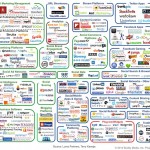 Session #4 - Measuring and Evaluating Financial Performance
Session #4 - Measuring and Evaluating Financial Performance
This session is all about finance and financial ratios. It’s definitely not my expertise, but as entrepreneurs we need to understand basic finance and accounting principles in order to monitor the health of our company. This session will cover a few accounting principles that are often misunderstood, such as the difference between cash and profit, as well as cover essential ratios around liquidity, conversion, and leverage.
Basic Accounting Principles
Cash vs Accrual Accounting - Accrual means you can record the sales as soon as it happens even if it’s on credit. Therefore you can record a transaction before you actually receive cash for said transaction. That is why a lot of firms will show profits, but no cash to pay their expenses. This can cause a firm to go bankrupt even if they are “profitable”.
“What matters isn’t when you sell something, it’s when you COLLECT the money. It’s not when you buy something, it’s when you PAY for it.” - William Hancock
Depreciation - A common misunderstanding with depreciation is that it is NOT a cash expense. So when you look at an income statement where Profit = Revenues - Expense, even though depreciation is listed in the expenses side, it is technically not cash coming out of your pocket.
Accounting is very important, especially at early stages of a business when you really need to understand where your cash is going. If you aren’t familiar with accounting basics, I strongly suggest you check out an accounting tutorial to really grasp these concepts - they might be boring, but they’re very important!
Financial Ratios
Financial ratios is quite often overlook at the early stages of a business, but they are a valuable indication on the health of a company. Ratios help measure liquidity (can you meet your short-term obligations), leverage (how are you using your debt), conversion (how long does it take to turn inventory into cash), profitability and efficiency.
Liquidity Ratios
As mentioned earlier, the liquidity ratios help indicate if you can meet your short-term obligations. Two liquidity ratios are often used in entrepreneurial finance; Current ratio, and Quick ratio
Current Ratio = Average Current Assets / Average Current Liabilities. A current ratio that is greater than 1 indicates that if all current assets were converted into cash, the company would have enough cash to pay all of it’s short-term obligations
Quick Ratio = (Average Current Assets - Average Inventories) / Average Current Liabilities. The difference between the quick and current ratios is that the quick ratio doesn’t take into account inventory. Many accountants and financial analysts believe that inventory is less likely to be turned quickly into cash, therefore it should not be considered when analyzing if short-term obligations can be paid. Again, a quick ratio greater than 1 is ideal
Conversion Ratios
These ratios are used to measure the average time in days that current assets are converted into cash, and the average time current liabilities demand cash. Of course, the shorter amount of time it takes tot convert assets, the better it is for your business. Vice versa, the shorter amount of time liabilities demand cash, the less liquidity you have to operate the business. The goal with the conversion ratios is to discover the cash conversion cycle.
Inventory-to-Sale Conversion Period (IS) = Average Inventories / (Cost of Goods Sold / 365). This ratio will tell you how many days it takes for your business to convert the purchase of materials into a sale of finished goods. The shorter the better. When we look at inventory, we always divide using the cost of goods because that is the price at which we hold inventory.
Sale-to-Cash Conversion Period (SC) = Average Receivables / (Net Sales / 365). Remember that we discussed the difference between cash and accrual accounting? Well this is where it comes into play. The sale-to-cash ratio allows you to determine how long it takes you to convert your receivables to actual cash.
Purchase-to-Payment Conversion Period (PP) = (Average Payables + Average Accrued Liabilities) / (Cost of Goods Sold / 365). In short, this ratio determines how long it takes you to pay your suppliers using cash.
Cash Conversion Cycle = IS + SC - PP. This is the number that matters most. The cash conversion cycle represents the number of days of operation that must be externally financed. Ideally, that cash conversion cycle should be as close to zero as possible, which would indicate that the production is fully internally financed.
Leverage Ratios
These ratios are used to look at how a company has used debt and its ability to meet debt obligations.
Total-Debt-to-Total-Assets Ratio = Average Total Debt / Average Total Assets. This ratio is good for two reasons - First, it tells us how much has be pledged to debt holders and second, how much of the company is supported by equity. The higher the debt ratio, the higher the risk of the company because chances of paying off the debt is reduced. On the positive side, debt means that he owner retains more of the company.
Current-Liabilities-to-Total-Debt Ratio = Average Current Liabilities / Average Total Debt. The percent of total debt held in current liabilities provides a reasonable glimpse of the venture’s reliance on debt that will soon require cash outflow.
More info on Financial ratios for Entrepreneurs in the Entrepreneurial Finance book by Leach and Melicher.




















